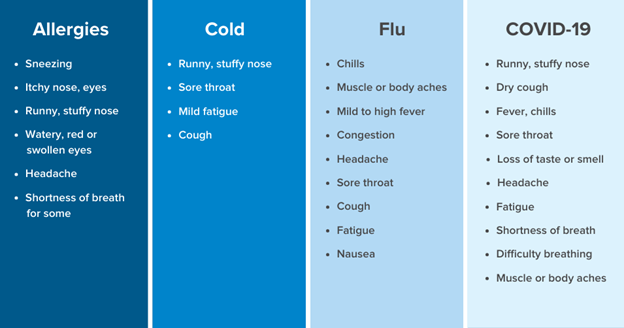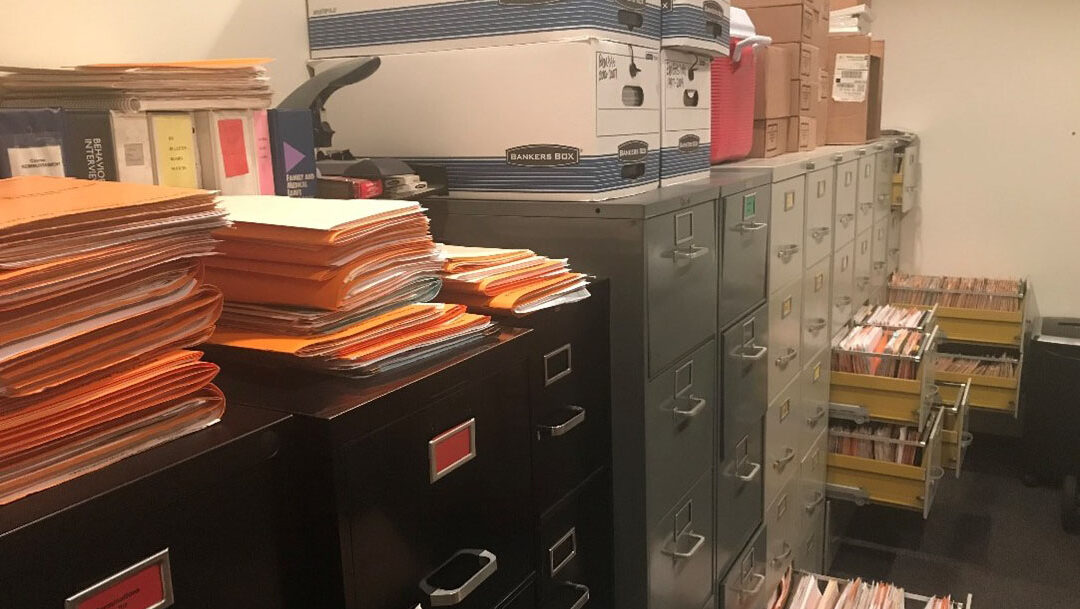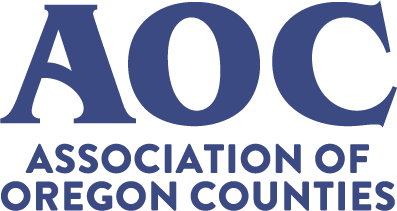
Apr 25, 2025 | AOC Business Partner
Sponsored content contributed by AOC Business Partner: Covenant Global
Securing data from cyberattacks is no longer a background issue — it’s an urgent and daily concern for individuals, government entities, and critical infrastructure. Cyber threats targeting local governments have surged, with attacks leaking personal data to the dark web, exposing vulnerabilities in infrastructure, or deploying undetected malware like Project Sauron — which operated silently for five years.
Oregon’s municipalities are under pressure to defend against constant and sophisticated attacks, all while staying compliant with a growing list of regulatory frameworks. The State of Oregon’s Cyber Security Plan outlines mandatory compliance with frameworks like:
- FTI (taxpayer information)
- HIPAA (health records)
- FERPA (education records)
- PCI-DSS (payment data)
- CJIS (criminal justice)
At first glance, the number of overlapping standards may seem overwhelming, if not impossible to track. Adding to the pressure, the plan also mandates alignment with National Institute of Standards and Technology (NIST) 800-53, a deep catalog of 1,500+ security controls. But here’s the good news: most of these frameworks are built on NIST 800-53. Understanding this simplifies compliance, turning a complex challenge into a manageable checklist.
NIST 800-53 isn’t just another requirement — it’s the foundational blueprint trusted by federal agencies and adopted by leading states. It provides the widest range of security controls, purpose-built for diverse government scenarios. That’s why Oregon chose it—and why local governments can trust it to scale with their evolving needs.
Additionally, the NIST Cybersecurity Framework (CSF) helps municipalities not only select the right controls but also implement them strategically. These tools work in tandem:
- 800-53 = the “what” of security
- CSF = the “how” of implementation
A great example? The Lower Colorado River Authority (LCRA) successfully leveraged both to harden infrastructure while simplifying compliance.
The bottom line: Oregon municipalities don’t need to reinvent the wheel. By aligning with the NIST 800-53 and CSF — both purpose-built by U.S. authorities for public-sector resilience — counties can efficiently secure systems, simplify compliance, and better protect their communities. Now is the time to act.
Contributing Author: Daniel Dolinov, Senior Compliance Consultant, Covenant Global

Apr 24, 2025 | AOC Business Partner
Sponsored content contributed by AOC Business Partner: Energy Trust of Oregon
Disruptions in federal funding are creating uncertainty for energy and climate programs across the country, including some supported by the Inflation Reduction Act. Amidst this uncertainty, Energy Trust of Oregon remains a consistent resource to help people, businesses and communities throughout Oregon and Southwest Washington access energy-efficient solutions and renewable power.
Energy Trust was created by the Oregon Legislature more than 20 years ago as an independent nonprofit dedicated to helping utility customers lower energy costs and generate renewable power. It is funded largely by customers of Portland General Electric, Pacific Power, NW Natural, Cascade Natural Gas and Avista.
One of the ways Energy Trust continues to serve the people of Oregon and Southwest Washington is by supporting city and county governments in their goals to advance a clean energy future that builds resilience, promotes equity and supports economic vitality. It does this by providing cash incentives, technical expertise and more. Support includes:
- Building upgrades for businesses, offices, hospitals and government buildings, such as funding new heating and cooling systems in schools to create a more comfortable learning environment for students.
- Early design assistance and energy studies for new buildings and major renovations to incorporate the most efficient technologies and methods.
- Energy storage for critical infrastructure and core municipal services, such as installing batteries with a solar energy system to provide backup power during an outage.
- Resilience planning to increase community sustainability, including fire resistant building practices, efficient indoor cooling and locally generated renewable energy.
- Renewable energy project development assistance and installation incentives, such as installing hydropower in city water systems for clean, reliable energy or developing community solar projects to lower bills for households unable to install their own solar panels.
- A network of experienced local contractors to provide tailored solutions based on the specific needs of various industries.
Energy efficiency upgrades make living and workspaces safer, more comfortable and more affordable to operate. Additionally, by investing in energy efficiency and renewable energy projects, cities and counties can meet sustainability goals and reduce operating costs that help free up funds for core services.
Energy Trust is and continues to be here to provide reliable support and practical solutions to help cities and counties thrive. Learn more about Energy Trust and clean energy solutions at www.energytrust.org.

Mar 26, 2025 | AOC Business Partner
Sponsored content contributed by AOC Business Partner: Oregon Department of Energy
The Oregon Department of Energy (ODOE) has kicked off the second phase of developing the Oregon Energy Strategy, and there are many ways Oregonians can weigh in over the next several months. The agency encourages Oregon counties and their residents to join these important conversations as ODOE works toward a final energy strategy in November 2025.
The Oregon Energy Strategy will identify pathways to achieve the state’s energy objectives. It will evaluate benefits and challenges of different pathways, present policy recommendations for decisionmakers, and reflect input from Oregonians who informed the Strategy.
Using input and comments from Tribes; the energy strategy’s Advisory and Working Groups; staff-to-staff conversations with state agencies, including an Inter-Agency Steering Group; and the public, ODOE and its technical contractors developed scenarios that represent different energy pathways the state could take to achieve its energy policy objectives by 2050.
A Reference Scenario includes “aggressive but achievable” assumptions on the adoption of technologies, such as energy efficiency and electrification, which numerous studies indicate are key to decarbonizing the energy sector. A set of Alternative scenarios each contain a different mix of assumptions about technologies and fuels and that are compared to the Reference Scenario. Building on the results of the energy modeling, additional technical analysis will evaluate effects of different pathways on energy burden for different households in Oregon, air quality and public health, and employment. Geospatial mapping will provide additional context to understand the modeling results.
ODOE and its project contractors presented modeling results for the Reference Scenario and Alternatives earlier this year. The modeling results serve to inform policy discussions in Working Groups and Advisory Group meetings taking place through May – as well as during two public listening sessions on April 24, 2025.
ODOE will also host an information session on April 9 to discuss results of complementary analyses on what the agency is referring to as the energy wallet, air quality, and geospatial mapping considerations. The energy wallet looks at how potential pathways will affect energy spending for five diverse sample Oregon households, in addition to how increased electrification could affect those customers’ energy costs over time. Air quality modeling will look at how changes in air quality coming out of modeled scenarios affect public health and economic benefits. Geospatial mapping will explore community-level energy inequities and relationships with socioeconomic disparities to provide a foundation for deeper insights into policy discussions.
ODOE’s Oregon Energy Strategy team welcomes input and involvement from Oregon counties and those who call them home. Learn more about the project on ODOE’s website.

Mar 26, 2025 | AOC Business Partner
Sponsored content contributed by AOC Business Partner: Covenant Technology Solutions
By now, most of us have heard horror stories of local governments falling victim to cybercriminals — stories of ransomware, phishing attacks, and data breaches. It sounds awful, but for county leaders, this isn’t just background noise. It’s a direct concern. Why? Because you’re responsible for protecting community assets, including sensitive data and critical services.
County leaders in Curry County learned this the hard way. On April 26, 2023, this beautiful southern coastal county was struck by a ransomware attack. Once inside the network, attackers encrypted data, locking the county out of its digital systems. No files. No email. No voicemail. Real estate transactions halted. Police communications failed. Virtually every public service was paralyzed. Employees reverted to paper while IT systems were rebuilt from scratch.
As Curry County Commissioner Brad Alcorn described at the time, “It has impacted every function of this county and literally wiped away our digital footprint.” In an interview with Oregon Public Broadcasting a month after the initial attack (May 2023), Alcorn reported, “We are still not up and running and still struggling through this.” Click here to listen to the entire interview
The attackers demanded a ransom to restore access. However, in line with guidance from the State of Oregon and the FBI, the county did not pay. Instead, it began the costly, painstaking process of rebuilding. Restoring services took months and hundreds of thousands of dollars.
This incident underscores the real-world consequences of cyber threats and the urgent need for local government leaders to prioritize cybersecurity to protect essential community assets. Says Alcorn, “When I woke up on the morning of the 26th, I was focusing on our housing issues. I was focusing on our homeless issues and our funding issues. The last thing on my mind was a cybersecurity attack.” But now Alcorn cautions leaders, “Cybersecurity is expensive. But I have got to tell you, if you’re in charge of any type of government organization, you should really be investing in your cybersecurity infrastructure.”
The takeaway is clear: safeguarding digital infrastructure is no longer optional. It’s a fundamental responsibility. Protecting public trust and essential services starts with building cyber resilience — before disaster strikes.

Feb 24, 2025 | AOC Business Partner
Sponsored content contributed by AOC Business Partner: Regence
How to recognize the differences between a cold, flu, allergies and COVID-19
Know the symptoms
Sneezing, coughing or feeling feverish? Here are some common symptoms and what to look for.
Colds vs. allergies: Colds typically last three-10 days, while allergy symptoms can stick around for weeks or months. Itchy, watery eyes are rare with a cold but are common with allergies. A dry cough with wheezing is more likely an allergy, while a wet cough with mucus is more likely a cold.
Allergies vs. COVID-19: Allergies are more likely to cause itchy, watery eyes. Allergies don’t tend to cause fever or body aches, and they typically do not cause coughing, except in cases where there is a lot of nasal drainage. If you have allergies, stay on top of your treatment to prevent symptoms from getting worse.
Flu vs. COVID-19: Both can cause fever, cough and fatigue, but the flu is more likely to come with a high fever, severe headaches and body aches. COVID-19 symptoms may appear anywhere from two to 14 days after exposure and may come with a loss of taste and smell. If you’re unsure, take a COVID-19 test—especially if you’re at a higher risk for severe illness.

Manage your symptoms
Consider over-the-counter medications or home remedies: For colds and allergies, try over-the-counter medications and home remedies like rest, hydration and humidifiers to improve symptoms. For flu symptoms, pain relievers like aspirin, acetaminophen or ibuprofen can help reduce fever and relieve body aches.
Call your health care provider: If you have severe symptoms or are unsure about your diagnosis, contact a health care provider for guidance.
Prevent the spread of infection
Get vaccinated: The best prevention from flu and severe COVID-19 symptoms is getting vaccinated. The Centers for Disease Control and Prevention (CDC) recommends getting a flu vaccine once it’s available, ideally by the end of October.
Take a COVID-19 test: If you’re unsure about your symptoms, take a test to rule out COVID-19.
Know when to return to normal activities: If you have the flu or COVID-19, the CDC advises waiting until your symptoms are improved and you haven’t had a fever (and aren’t taking fever-reducing medication) for at least 24 hours.
More information
Check out this infographic from the CDC for guidance on protecting yourself and others from respiratory viruses like the flu, COVID-19 and RSV.
Take added precautions: For the next five days after returning to normal activities, take extra steps to prevent the spread of infection.
- Improve air quality with ventilation or air purifiers.
- Practice good hygiene, such as frequent handwashing and cleaning surfaces.
- Wear a mask when around others indoors.
If you get sick and need care, call your doctor. Consider virtual care or an urgent care clinic before heading to the hospital emergency department (ED). EDs will cost you more and may be extremely busy so wait times could be long.

Feb 24, 2025 | AOC Business Partner
Sponsored content contributed by AOC Business Partner: Nine Peaks Solutions
Replacing Banker Boxes With Modern Document Management Solutions
Traditional methods of preserving documents—such as storing them in banker boxes in warehouses or offsite storage facilities—are increasingly being replaced by innovative digital document and records management systems. This shift is driven by the growing demand for efficiency, compliance, and ease of access, and it is clear that businesses that adopt digital solutions are reaping significant benefits.
The Problem with Banker Boxes
Many organizations rely on banker boxes to store important documents, such as financial records, commissioner meeting records, contracts, legal files, and employee records. While these boxes can hold large volumes of paperwork, they come with significant downsides:
- Physical Space Requirements: Storing documents in banker boxes takes up a lot of physical space, often in crowded offices, offsite warehouses, or expensive storage units.
- Time-Consuming Retrieval: Searching for a specific document requires manually sifting through boxes, a slow and inefficient process.
- Security Risks: Paper documents are vulnerable to theft, damage, and loss due to fires, floods, or other disasters.
- Compliance Challenges: Many industries require companies to retain documents for a set number of years. Managing compliance with regulatory requirements through physical storage can be cumbersome.
- Environmental Impact: The continued use of paper results in deforestation and higher carbon footprints, especially when physical storage needs grow over time.
Enter Digital Document Management Solutions
In the face of these challenges, businesses are turning to digital solutions that provide more efficient, secure, and cost-effective ways to store and manage historical documents. With the adoption of cloud-based systems, scanning technology, and automated workflows, organizations are transforming how they handle paperwork. Digitizing documents offers several key advantages:
- Space Efficiency: Digital storage eliminates the need for physical space. Businesses can store thousands of documents in a fraction of the space it would take to house banker boxes.
- Easy Accessibility: With digital documents stored in secure cloud environments or enterprise document management systems, authorized users can retrieve files instantly from anywhere with an internet connection.
- Enhanced Security: Digital document storage offers advanced encryption, access control, and backup systems, significantly reducing the risk of data loss or unauthorized access.
- Searchability and Automation: With the right software, companies can index documents, allowing for fast keyword-based searches. Automation features can also flag important deadlines or actions needed based on document content.
- Compliance and Auditing: Document management systems come with audit trails and automatic retention policies, ensuring that documents are stored in compliance with industry regulations and are properly disposed of when no longer needed.
Laserfiche and Nine Peaks Solutions: A Modern Approach to Document Management
Nine Peaks Solutions is at the forefront of helping businesses transition from traditional paper-based storage to efficient, digital solutions. The services and partnership that NPS provides with Laserfiche is designed to help counties eliminate the need for banker boxes and move their records management processes online and more transparent.
Laserfiche / Nine Peaks offers a range of solutions that include:
- Document Scanning and Indexing: They help businesses scan, digitize, and index their paper documents, making it easy to transition from physical to digital archives.
- Cloud-based Storage: Nine Peaks provides secure, cloud-based document storage that ensures easy access, backup, and disaster recovery.
- Automation and Workflow Integration: Their systems integrate with existing organizations’ processes, automating document handling, approvals, and compliance tracking.
- Advanced Security: With top-notch security features, including encryption and role-based access controls, the Laserfiche and Nine Peaks team ensures that sensitive documents are protected at all stages of storage and retrieval. Bottom line… you have to be able to keep what you already have… no matter what threats are coming your way.
By offering these services, Nine Peaks Solutions helps your county reduce overhead costs associated with physical storage, improve document retrieval times, and enhance overall workflow efficiency.
NinePeaksSolutions.com/AOC
Request a demo to learn more about how Nine Peaks Solutions can advance your records management and organization continuity capabilities
Nine Peaks Solutions LLC
5 NW Hawthorne Ave, Suite 100
Bend, OR 97703-2935
(844) 797-3257
(541) 797-7595
Info@NinePeaksSolutions.com







